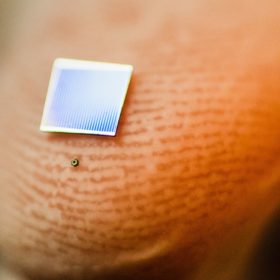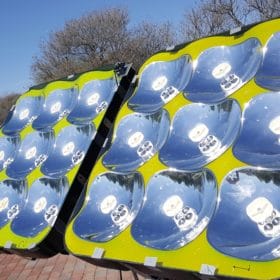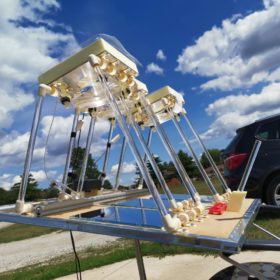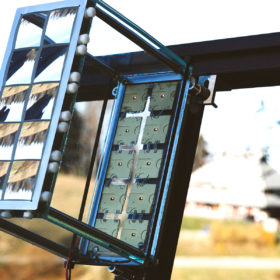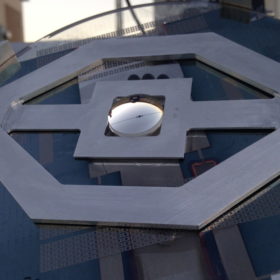Micro III-V solar cell with 33.8% efficiency
Developed by a French-Canadian research group, the triple-junction cell is based on indium gallium phosphide (InGaP), indium gallium arsenide (InGaAs) and germanium (Ge) and has an active area of only 0.089 mm2. It can be used for applications in micro-concentrator photovoltaics (CPV).
CPV module with triple-junction cells and double-bonded copper carriers
Université de Sherbrooke researchers have tested a new concentrator PV module for potential applications in heating, ventilation, and air conditioning systems in commercial buildings.
Radiative cooling for CPV systems
Scientists in the United States have tested soda-lime glass radiative coolers in a CPV system and claim these can reduce the device operating temperature by 5 to 36 degrees Celsius. This may result in an increase in the solar cell’s open-circuit voltage of between 8% and 27%.
Scientists hit 21.6% perovskite cell efficiency using concentrator PV
An international research group achieved the result on a 9 sq mm, triple-cation based, n-i-p structured perovskite cell using low solar concentration levels. Device instability, however, remains a challenge.
Beyond 40% – Fraunhofer ISE hits new module efficiency record
Germany’s Fraunhofer Institute for Solar Energy (ISE) has set a new world record for PV module efficiency. Scientists at the institute achieved 41.4% efficiency for a solar module using both tandem cell and high-concentration PV technology.
U.S. university CPV system outperforms silicon by 54% in test
A single-cell concentrating photovoltaic system developed by researchers at Penn State University reportedly reached 30% efficiency, and generated 54% more energy during a two-day test than a commercial silicon solar in the same conditions.
New alloy could pave the way for next generation solar cells
Researchers at the University of Michigan have developed a new semiconductor alloy that can capture near-infrared light in the leading edge of the visible light spectrum. This could be a major step forward the development of a new generation of solar cells called “concentrator photovoltaics”.
